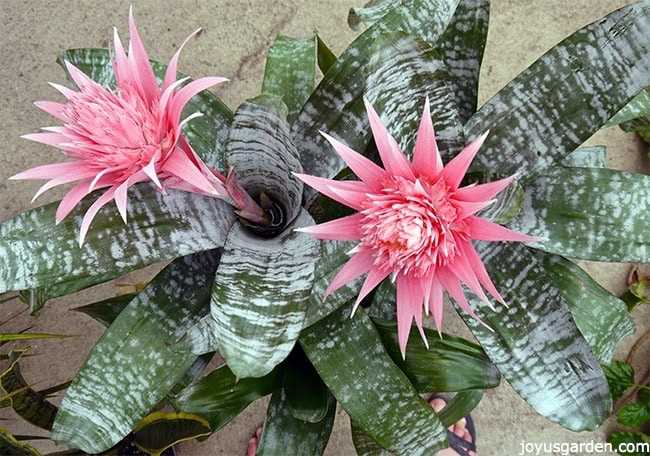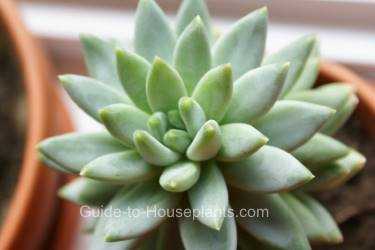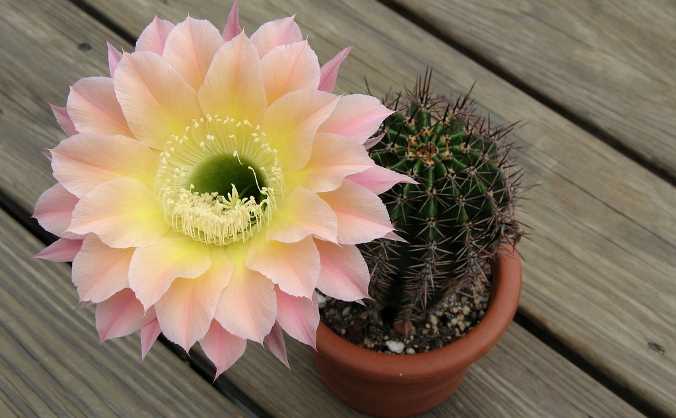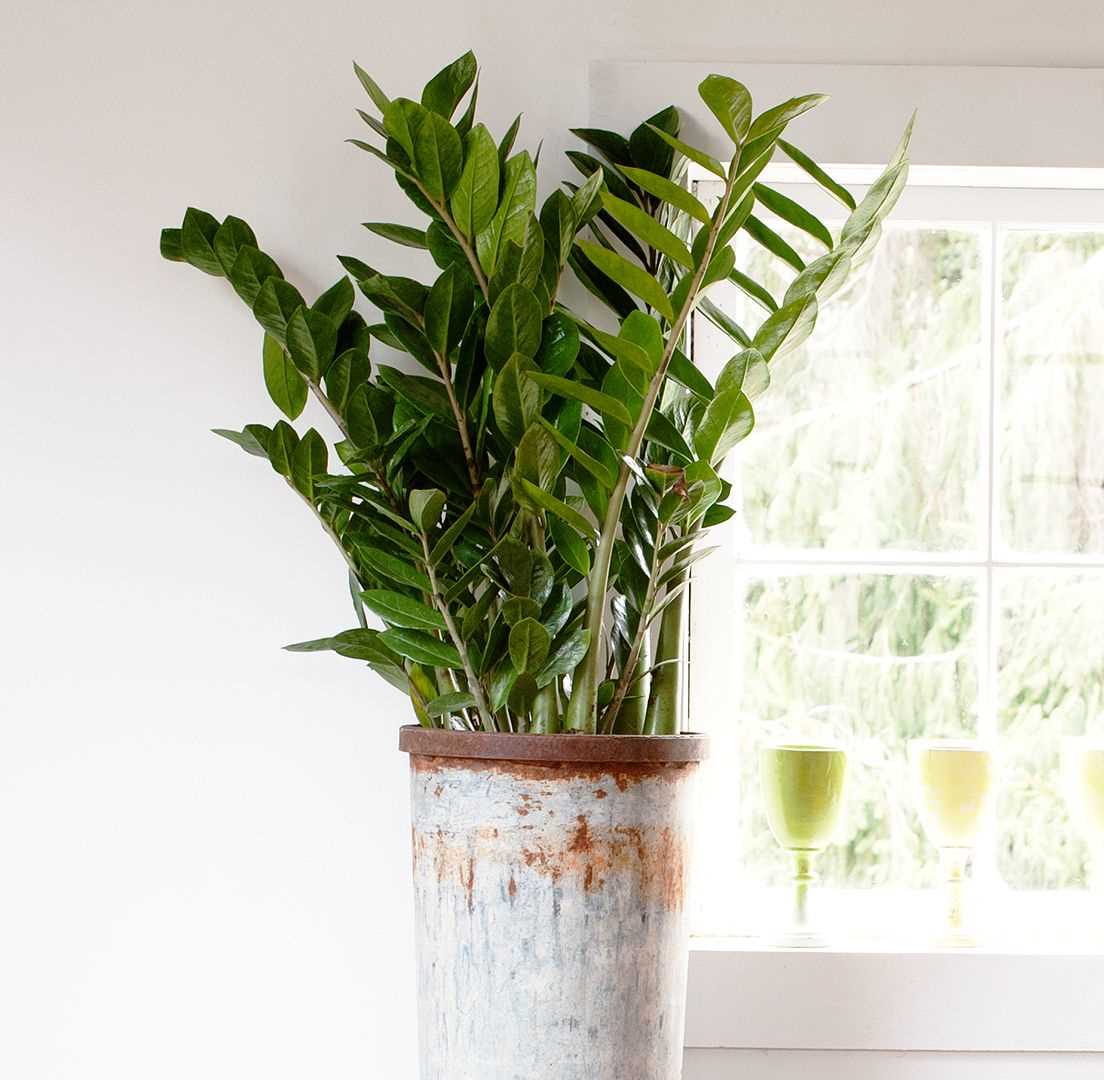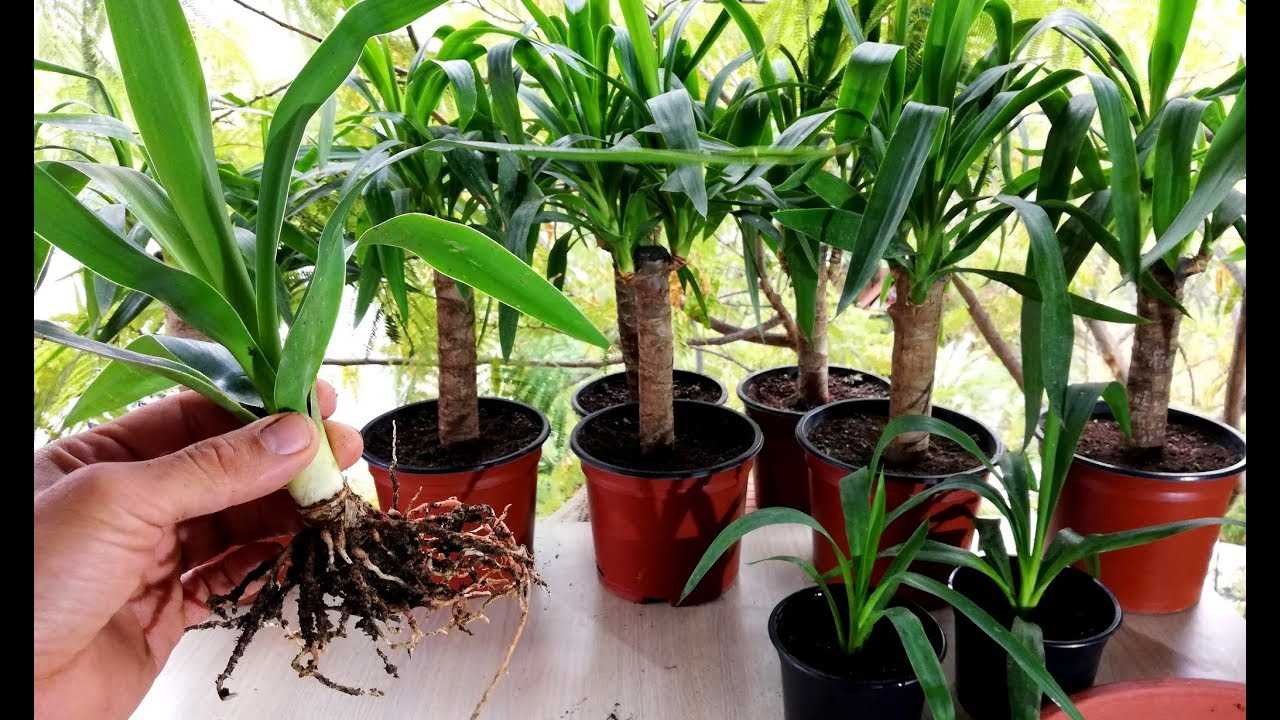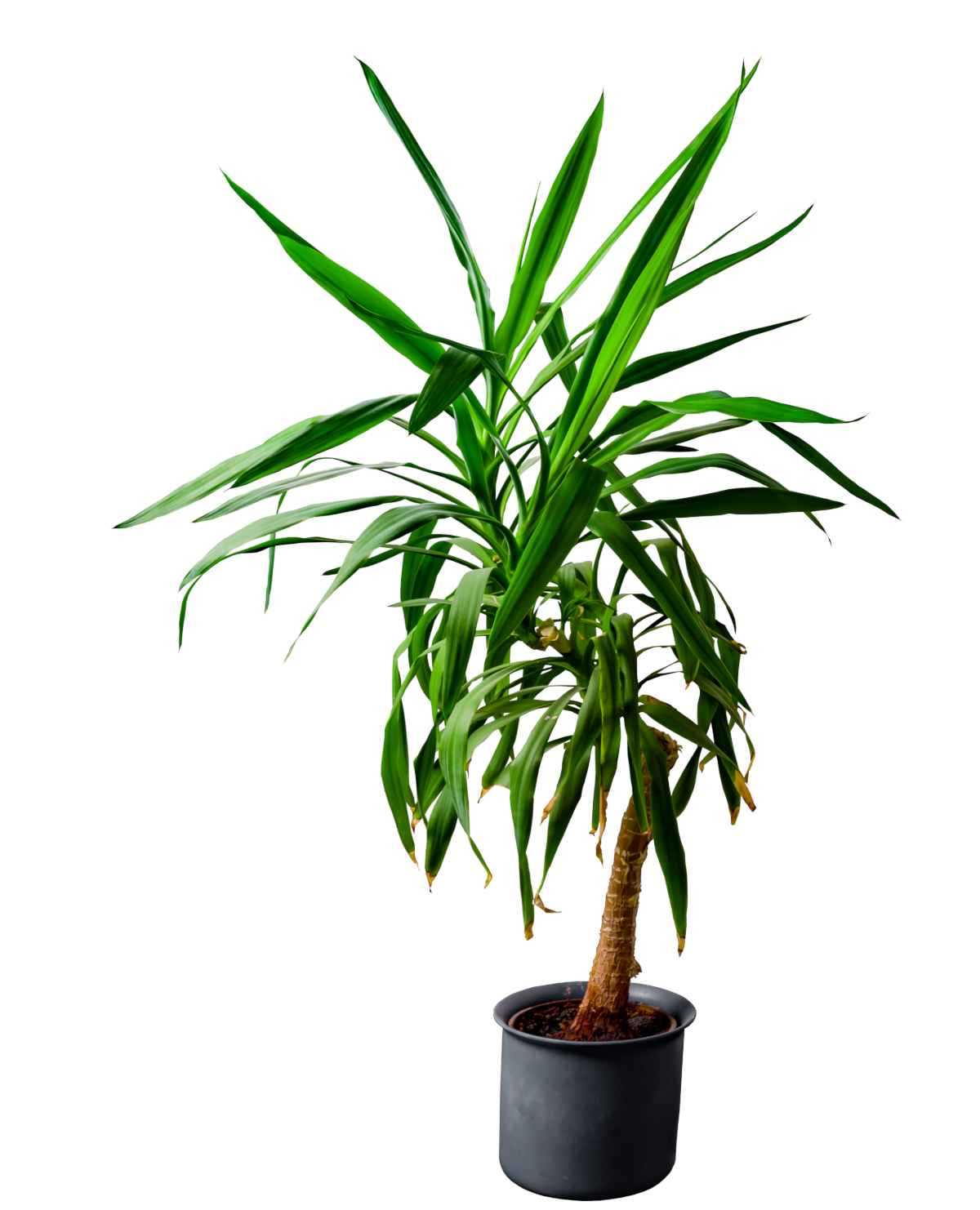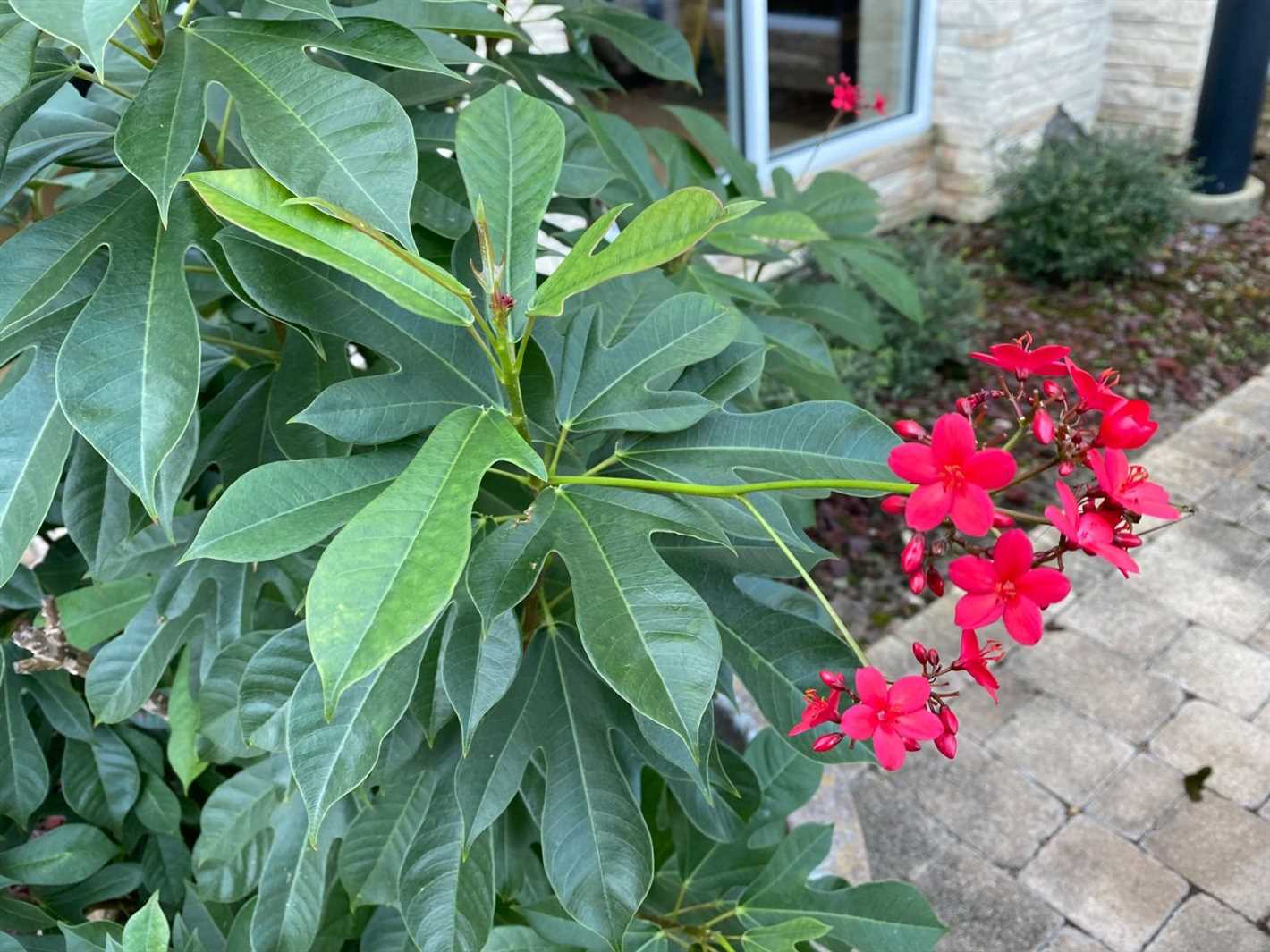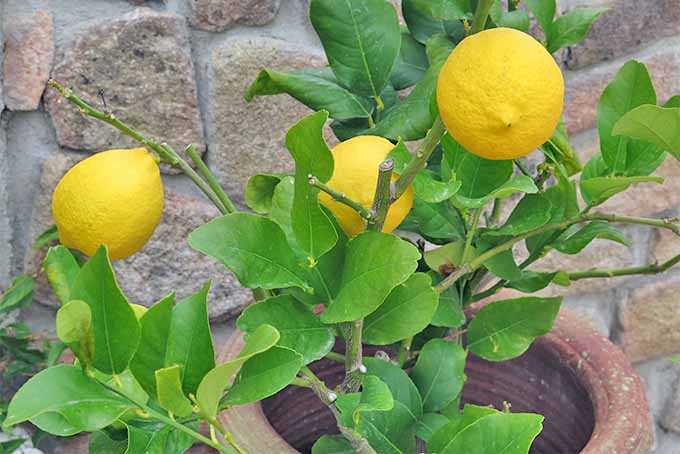- Importance of Pruning Plants
- Benefits of Pruning
- 1. Encourages Healthy Growth
- 2. Controls Plant Size
- 3. Enhances Flowering
- 4. Improves Air Circulation
- 5. Shapes Plants for Aesthetic Appeal
- 6. Removes Hazardous or Unwanted Growth
- 7. Renew Old or Overgrown Plants
- When to Prune Plants
- Tools for Pruning
- Pruning Techniques for Different Plant Types
- 1. Shrubs and Bushes
- 2. Trees
- 3. Roses
- 4. Perennials
- 5. Vines
- How to Prune Flowers for Better Blooms
- 1. Choose the Right Time
- 2. Prepare the Tools
- 3. Understand Pruning Goals
- 4. Identify Dead or Diseased Branches
- 5. Trim for Shape
- 6. Encourage Air Circulation
- 7. Promote New Growth
- 8. Regular Maintenance
- 9. Dispose of Pruned Material
- 10. Seek Professional Advice
- Common Mistakes to Avoid while Pruning
- 1. Improper Timing
- 2. Excessive Pruning
- 3. Wrong Pruning Technique
- 4. Ignoring Plant Health
- 5. Neglecting Safety Precautions
- 6. Failing to Disinfect Tools
- 7. Not Considering Plant Structure
- Q&A:
- When is the best time to prune flowers?
- How much of the plant should I prune?
- Is it important to use clean and sharp tools when pruning?
- Can pruning help improve the overall health of a plant?
- Can pruning help control the size of a plant?
- Should I prune flowers in the fall?
- Video: Fuchsia Masterclass (potting, pruning, cuttings, hardiness) – Pots & Trowels
In the second part of our pruning series, we will explore the rules and techniques for cutting flowers. Pruning flowers is an essential step in maintaining their health and promoting the growth of new blooms. By removing spent flowers, you can redirect the plant’s energy to the production of new buds, resulting in a longer blooming period and a healthier overall plant.
Timing: Knowing when to cut flowers is crucial. Different types of flowers have different blooming periods, so it’s important to understand the specific needs of each plant. Generally, flowers should be cut when they have just begun to open but are not fully mature. This ensures that the blooms will last longer once they are cut and placed in a vase.
Tools: To cut flowers, you will need a good pair of gardening shears or scissors. It’s important to use clean and sharp tools to minimize damage to the plant. Dull or dirty blades can crush the stem, making it difficult for the plant to take in water and nutrients. Before cutting, disinfect your tools with a solution of one part bleach to nine parts water to prevent the spread of diseases.
Techniques: When cutting flowers, it’s essential to make a clean and precise cut. This means cutting at a slight angle, about 45 degrees, just above a leaf node or bud. This allows for better water uptake and prevents the stem from rotting. Avoid crushing or jagged cuts, as they can hinder the plant’s ability to heal and may introduce diseases.
Pruning flowers is an art and a science. By following these rules and techniques, you can ensure that your plants will thrive and reward you with a bountiful display of beautiful blooms.
Importance of Pruning Plants
- Promotes healthy growth: Pruning plants is important because it stimulates new growth. By removing dead or damaged branches, you encourage the plant to focus its energy on producing new and healthy growth.
- Controls plant size: Pruning helps to control the size and shape of plants. By trimming back branches, you can prevent plants from becoming too large or spreading too far, making them more manageable in your garden.
- Improves air circulation: Pruning plants allows for better air circulation, reducing the risk of disease and pest infestation. Removing crowded branches opens up the plant to sunlight and airflow, creating a healthier environment.
- Increases flower production: Pruning flowering plants can actually promote more blooms. By cutting back certain branches, you can stimulate the growth of new flowers, resulting in a more abundant display.
- Shapes plants for aesthetics: Pruning is an essential technique for shaping plants for aesthetic purposes. By selectively removing branches, you can create a more pleasing and balanced appearance, enhancing the overall beauty of your garden.
- Removes diseased or damaged branches: Pruning plants allows you to identify and remove diseased or damaged branches, preventing further spread of disease and promoting the overall health of the plant.
Overall, pruning plants is a necessary practice that offers numerous benefits. By taking the time to prune your plants properly, you can promote their health, control their size, enhance their appearance, and ultimately enjoy a more thriving and beautiful garden.
Benefits of Pruning
Pruning is an essential practice for maintaining the health and appearance of plants. It involves selectively removing certain parts of a plant, such as branches, leaves, or flowers. While pruning can be time-consuming, it offers numerous benefits for both the plant and the gardener.
1. Encourages Healthy Growth
Pruning helps stimulate healthy growth in plants. By removing dead or damaged branches, you allow the plant to direct its energy towards new growth. This can result in stronger stems, increased flower production, and improved overall plant health.
2. Controls Plant Size
Pruning is an effective method for controlling the size and shape of plants. By selectively removing branches, you can prevent plants from becoming overgrown and encroaching on other plants or structures. This is particularly important for trees and shrubs that can pose a hazard if not properly maintained.
3. Enhances Flowering
Proper pruning can enhance the flowering of many plants. When you remove spent flowers, you promote the development of new buds, leading to more abundant and longer-lasting blooms. Additionally, pruning can help maintain a more compact and bushier plant shape, resulting in a more attractive display of flowers.
4. Improves Air Circulation
Pruning can improve air circulation within plants, preventing the development of fungal diseases. By thinning out the foliage, you reduce the chances of humidity buildup, which can lead to issues like powdery mildew or black spot. Improved air circulation also helps to prevent pest infestations on plants.
5. Shapes Plants for Aesthetic Appeal
Pruning can be used to shape plants and create a more attractive garden or landscape. By selectively removing branches or training growth in a certain direction, you can achieve the desired shape or form for a plant. This is particularly useful for formal gardens or when shaping plants into hedges, topiaries, or espaliers.
6. Removes Hazardous or Unwanted Growth
Pruning allows for the removal of hazardous or unwanted growth. This can include dead or diseased branches that can pose a safety risk or negatively impact the overall health of a plant. Pruning can also be used to remove invasive or unwanted plants, helping to maintain the desired aesthetic of a garden or landscape.
7. Renew Old or Overgrown Plants
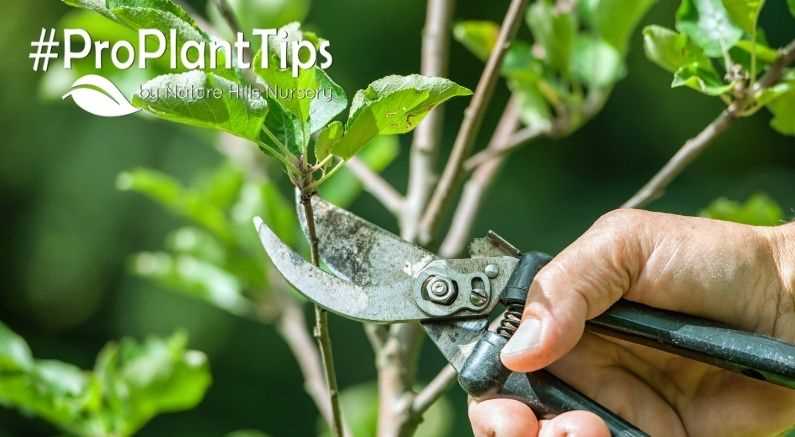
Pruning can help renew old or overgrown plants, giving them a fresh start. By selectively removing the oldest or largest branches, you create space for new growth and rejuvenate the plant. This is particularly beneficial for shrubs or trees that have become woody or unproductive over time.
Overall, pruning offers a range of benefits for plants and gardeners alike. It promotes healthy growth, controls plant size, enhances flowering, improves air circulation, shapes plants for aesthetic appeal, removes hazardous or unwanted growth, and renews old or overgrown plants. By incorporating regular pruning into your gardening routine, you can help ensure the long-term health and beauty of your plants.
When to Prune Plants
Knowing when to prune your plants is essential for ensuring their health and promoting proper growth. The timing of pruning can vary depending on the type of plant and its specific needs. Here are some general guidelines to help you determine when to prune:
- Early spring: Many plants benefit from pruning in early spring before new growth begins. This includes deciduous shrubs and trees, such as roses and fruit trees. Pruning during this time allows for better air circulation and helps remove any dead or diseased branches before new growth starts.
- Late winter: Some plants, such as certain types of hydrangeas, should be pruned in late winter when they are dormant. This helps to encourage healthy growth and promote abundant flowering during the growing season.
- After flowering: For plants that bloom in spring or summer, it is often best to prune them immediately after they finish flowering. This allows you to remove any spent flowers and shape the plant without interfering with next year’s bloom.
It’s important to note that not all plants require regular pruning. Some plants, like evergreens, may only need occasional pruning to remove dead or damaged branches. Additionally, certain plants may have specific pruning requirements that differ from the general guidelines mentioned above. Always consult specific care instructions for each plant to ensure you prune it at the optimal time.
| Plant Type | Pruning Time |
|---|---|
| Deciduous Shrubs | Early spring before new growth |
| Roses | Early spring before new growth |
| Fruit Trees | Early spring before new growth |
| Hydrangeas | Late winter when dormant |
| Spring/Summer Bloomers | After flowering |
Overall, timing is crucial when it comes to pruning plants. By following the appropriate timing guidelines for each type of plant, you can maintain their health, promote proper growth, and enjoy beautiful blooms throughout the year.
Tools for Pruning
Pruning is an essential task for maintaining the health and appearance of plants. To effectively prune plants, it is important to have the right tools. Here are some common tools used for pruning:
- Pruning Shears: Pruning shears, also known as secateurs, are a basic tool for pruning. They have sharp, curved blades that are perfect for cutting small branches and stems. Choose shears with a comfortable grip and consider getting bypass shears for cleaner cuts.
- Pruning Saw: A pruning saw is used for cutting thicker branches that cannot be easily cut with pruning shears. Look for a saw with a curved blade and a comfortable handle to make your work easier.
- Hedge Shears: Hedge shears are designed specifically for trimming and shaping hedges. Their long, straight blades enable quick and precise cuts.
- Loppers: Loppers are similar to pruning shears, but they have longer handles and larger blades. They are ideal for cutting branches up to 2 inches in diameter. Look for loppers with extendable handles for greater reach.
- Pole Pruner: A pole pruner is a special tool for cutting higher branches without having to climb a ladder. It consists of a saw or pruning shear attached to a long pole that can be extended to reach the desired height.
- Garden Knife: A garden knife is a versatile tool that can be used for various pruning tasks. It is especially useful for removing suckers and vines and for making precise cuts.
- Gloves: Gloves are essential for protecting your hands during pruning. Choose gloves that are durable, comfortable, and provide good grip.
- Cleaning Tools: After each pruning session, it is important to clean and sanitize your tools to prevent the spread of diseases. Have a bucket of soapy water, a wire brush, and a disinfectant spray or solution handy.
Investing in high-quality pruning tools will make the task easier and more efficient. Take good care of your tools by keeping them clean and sharp, and they will last for many seasons to come.
Pruning Techniques for Different Plant Types
Pruning is an essential practice in maintaining the health and appearance of plants. However, different plant types require different pruning techniques to achieve the best results. Here are some guidelines for pruning various plant types:
1. Shrubs and Bushes
When pruning shrubs and bushes, it is important to remove any dead, damaged, or diseased branches first. This helps promote healthy growth and prevents the spread of infections. Additionally, you can shape the plant by selectively cutting back branches to achieve the desired form. It is recommended to prune shrubs and bushes during their dormant period to minimize stress on the plant.
2. Trees
Pruning trees involves removing dead, damaged, or crossing branches to improve their overall structure and appearance. It is important to make proper cuts by locating the branch collar, which is the swollen area where the branch is attached to the trunk. Pruning too much from the canopy of the tree can result in excessive sun exposure and loss of shade, so it is advisable to remove only the necessary branches and avoid topping the tree.
3. Roses
Pruning roses helps stimulate new growth and improve flowering. Start by removing any dead or weak canes. Then, prune back the remaining canes to an outward-facing bud to encourage an open, vase-shaped form. Remove any inward-facing or crossing canes to improve air circulation. Hybrid teas and floribundas are usually pruned more heavily, while shrub roses require lighter pruning.
4. Perennials
Pruning perennials is necessary to maintain their vigor and prevent them from becoming overcrowded. In early spring, remove any dead foliage and stems that have been damaged by frost. If your perennial has a mounding growth habit, you can trim it back to about 6 inches above the ground to promote new growth. For tall perennials, it is best to cut them back by about half to prevent flopping.
5. Vines
When pruning vines, it is important to understand their growth habits. For climbing vines, such as clematis, it is best to prune them lightly after flowering to control their size and shape. For twining vines, like wisteria, prune them during their dormant season to remove any excess growth and maintain their structure.
Remember to always use clean, sharp tools when pruning and to make cuts at a 45-degree angle, just above a bud or node. Following these techniques will help promote healthy growth and enhance the beauty of your plants.
How to Prune Flowers for Better Blooms
1. Choose the Right Time
Pruning flowers at the right time is crucial for ensuring better blooms. Generally, it is recommended to prune flowers in late winter or early spring before they start actively growing. This allows the plants to heal and recover before their growing season begins.
2. Prepare the Tools
Before you start pruning, make sure you have the right tools. Some common tools for pruning flowers include sharp pruning shears, loppers, and pruning saws. Clean and sharpen your tools before use to ensure clean cuts and minimize damage to the plants.
3. Understand Pruning Goals
Before you make any cuts, it is important to know why you are pruning. Different flowers may require different pruning approaches. Some common goals of pruning flowers include shaping the plant, removing dead or diseased branches, promoting air circulation, and stimulating new growth.
4. Identify Dead or Diseased Branches
Inspect the plant carefully and identify any dead or diseased branches. These branches should be pruned first to prevent the spread of disease and promote overall plant health. Make sure to make clean cuts just above a healthy bud or branch.
5. Trim for Shape
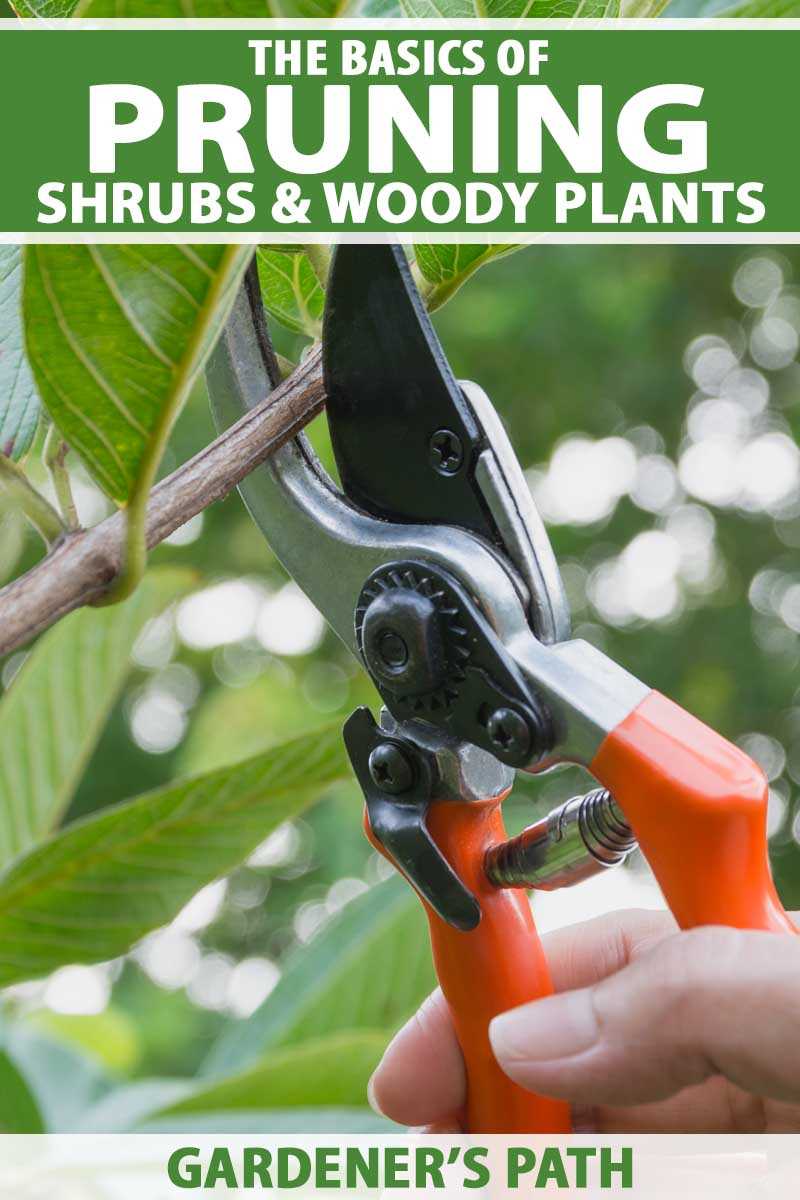
To promote an aesthetically pleasing shape, trim the outer branches of the plant. This will encourage the growth of new, healthy branches and promote a fuller appearance. Remember to make cuts just above a bud or branch to encourage proper healing.
6. Encourage Air Circulation
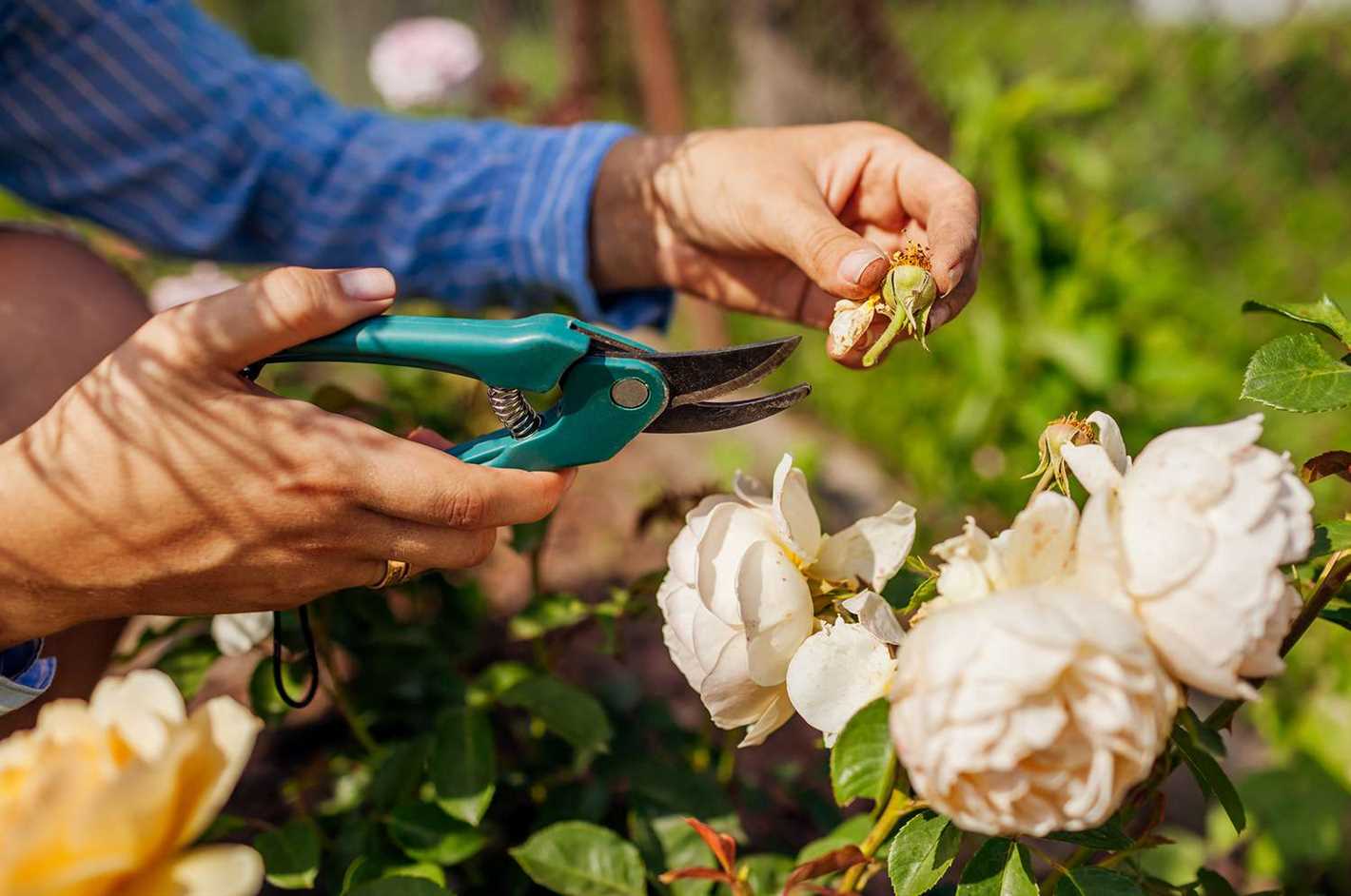
Pruning can also help improve air circulation within the plant, reducing the risk of disease and pest infestations. Remove any crossed or overcrowded branches to create space between the stems. This will allow air to flow freely and prevent moisture buildup.
7. Promote New Growth
For flowers that bloom on new growth, such as roses, it is important to prune to stimulate new growth. Remove old, woody branches to encourage the development of new shoots. This will result in stronger, healthier blooms.
8. Regular Maintenance
Pruning flowers should be a regular part of your gardening routine. Make it a habit to inspect your plants regularly and remove any dead or diseased branches. This will keep your flowers healthy and vibrant throughout the growing season.
9. Dispose of Pruned Material
After pruning, it is important to properly dispose of the pruned material. Dead or diseased branches should be removed from the garden to prevent further spread of disease. Consider composting healthy plant material to reduce waste and nourish your garden.
10. Seek Professional Advice
If you are unsure about how to prune a specific flower or if you have any concerns, it is always a good idea to seek professional advice. Garden centers, horticultural societies, and online resources can provide valuable guidance tailored to your specific flowers and growing conditions.
By following these pruning tips, you can help promote better blooms and overall plant health. Remember to always prune with care and observe the needs of your specific flowers for optimal results.
Common Mistakes to Avoid while Pruning
Pruning is an essential task for maintaining the health and appearance of plants. However, there are some common mistakes that people make while pruning. Avoiding these mistakes will help ensure that your plants thrive and look their best.
1. Improper Timing
Pruning at the wrong time can have negative effects on plant growth and flowering. It’s important to know the appropriate time to prune each specific type of plant. Some plants should be pruned in early spring, while others should be pruned after flowering. Research the optimal pruning time for each of your plants to avoid stunting their growth or missing out on blooms.
2. Excessive Pruning
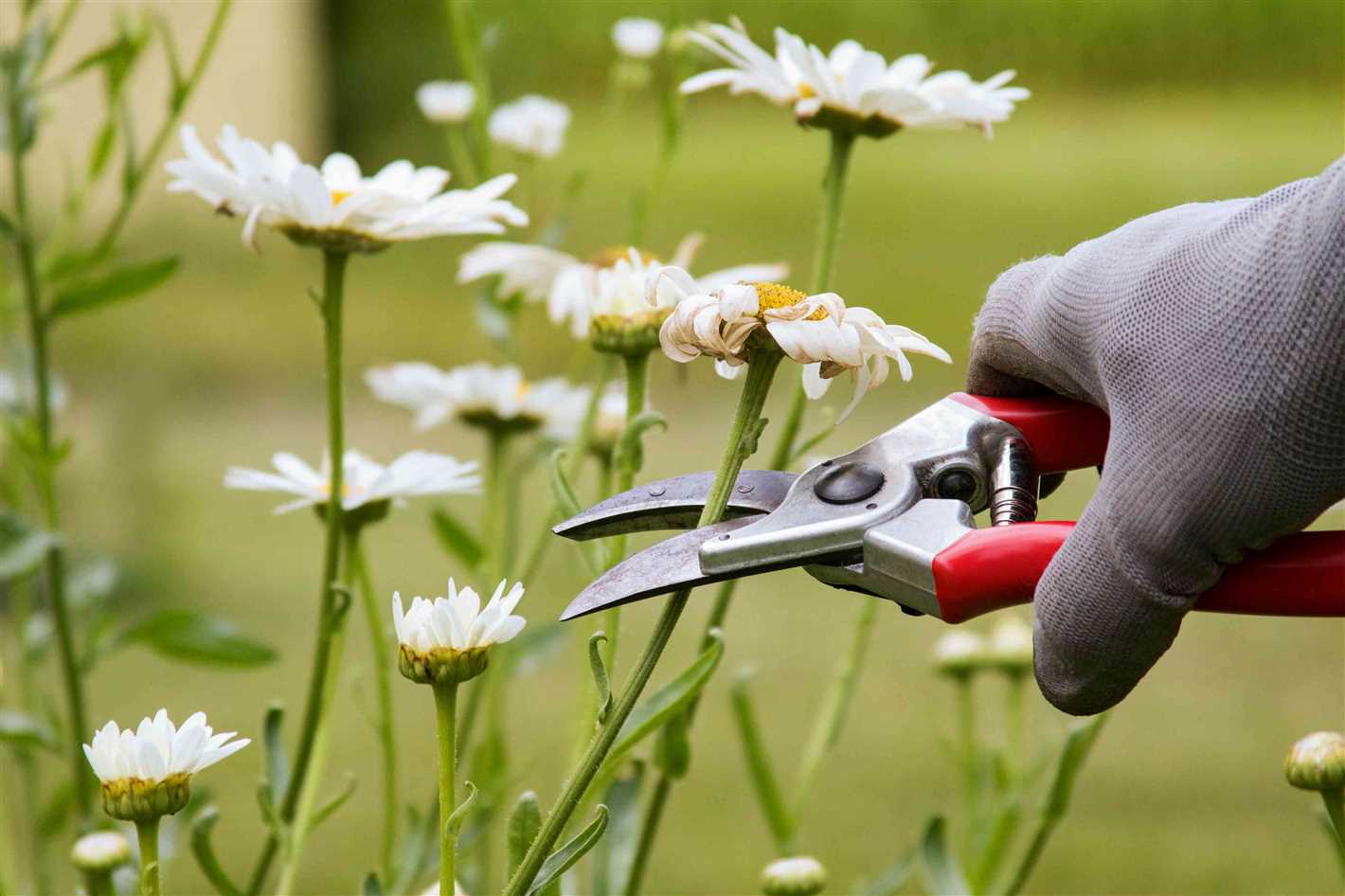
Over-pruning can be detrimental to the overall health of a plant. It’s important to avoid removing too much foliage or branches, as this can weaken the plant and make it more susceptible to disease and pests. A general rule of thumb is to never remove more than one-third of a plant’s total growth in a single pruning session.
3. Wrong Pruning Technique
Using incorrect pruning techniques can lead to uneven growth and unsightly appearances. Make sure to use clean, sharp tools and make cuts at the correct angle. For example, when pruning branches, make the cut just above a bud or lateral branch. This will encourage new growth and ensure proper healing.
4. Ignoring Plant Health
Before pruning, it’s important to assess the overall health of the plant. If the plant is already stressed or diseased, pruning could further harm it. It’s best to address any health issues before pruning or consult a professional if you’re unsure. Healthy plants will respond better to pruning and have a better chance of recovering quickly.
5. Neglecting Safety Precautions
When pruning, it’s important to prioritize safety. Use gloves and protective eyewear to prevent injuries from thorns or flying debris. If using a ladder, make sure it’s stable and secure. Also, be cautious of electrical lines and other hazards that may be present while pruning. Safety should always be a top priority.
6. Failing to Disinfect Tools
One common mistake is neglecting to clean and disinfect pruning tools between cuts. This can lead to the spread of diseases and pests from one plant to another. Always clean your tools with a disinfectant solution or a mixture of water and bleach to ensure that you’re not introducing any harmful organisms to your plants.
7. Not Considering Plant Structure
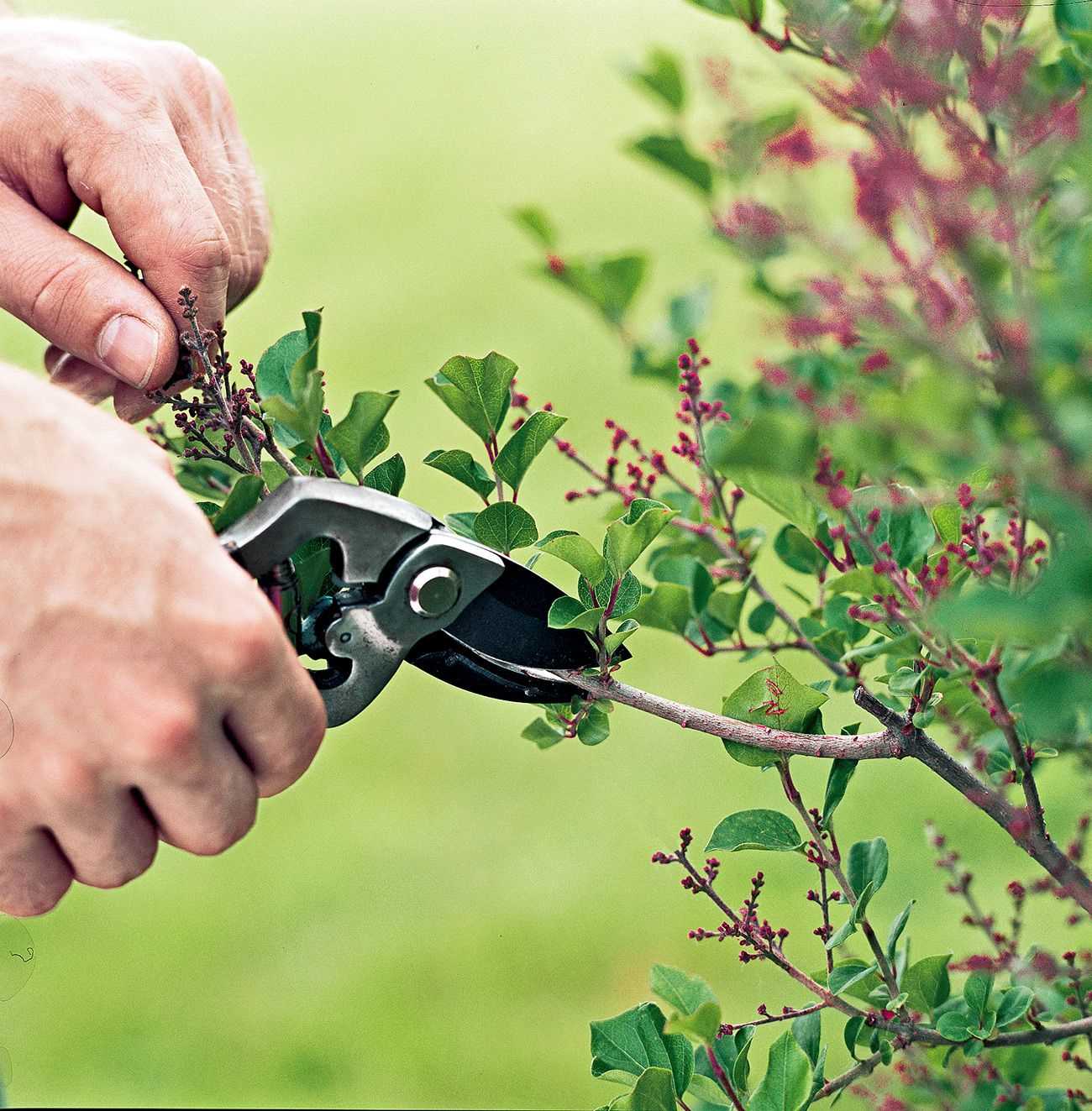
When pruning, it’s important to consider the natural structure and growth habit of the plant. Removing too many branches or pruning in a way that goes against the plant’s natural form can result in an unnatural and unattractive appearance. Take the time to study the plant’s growth pattern and prune accordingly to maintain its natural beauty.
Avoiding these common mistakes will help you become a more proficient pruner and keep your plants healthy and thriving. Remember to research plant-specific pruning guidelines and always prioritize the health and safety of your plants.
Q&A:
When is the best time to prune flowers?
The best time to prune flowers depends on the specific type of plant. In general, it is best to prune spring-flowering plants immediately after they finish blooming, while it is best to prune summer-flowering plants in early spring or late winter before they start producing new growth.
How much of the plant should I prune?
The amount of the plant that should be pruned depends on the specific type of plant and your desired outcome. As a general rule, you should remove dead or damaged branches, as well as any branches that are crossing or rubbing against each other. Additionally, you can prune back the plant to a desired size or shape, keeping in mind that pruning stimulates growth.
Is it important to use clean and sharp tools when pruning?
Yes, it is important to use clean and sharp tools when pruning. Clean tools help prevent the spread of diseases or pests, while sharp tools make clean and precise cuts, reducing the risk of damaging the plant. It is recommended to disinfect cutting tools before and after use, especially when pruning different plants.
Can pruning help improve the overall health of a plant?
Yes, pruning can help improve the overall health of a plant. By removing dead or damaged branches, you are promoting air circulation and reducing the risk of disease. Pruning can also stimulate new growth and improve the plant’s shape and appearance. However, it is important to prune properly and not over-prune, as this can weaken the plant.
Can pruning help control the size of a plant?
Yes, pruning can help control the size of a plant. By selectively removing branches, you can reduce the overall size and shape of the plant. However, it is important to consider the specific needs and growth habits of the plant before pruning. Some plants tolerate pruning well, while others may not respond as favorably.
Should I prune flowers in the fall?
Pruning flowers in the fall is generally not recommended, especially for cold climate regions. Pruning in the fall can stimulate new growth that may be vulnerable to winter damage. It is best to wait until the appropriate time for pruning, which is usually in early spring or after the plant has finished blooming.
Video:
Fuchsia Masterclass (potting, pruning, cuttings, hardiness) – Pots & Trowels
